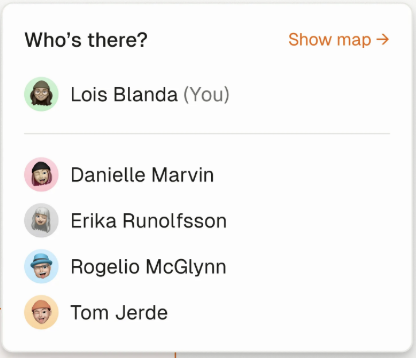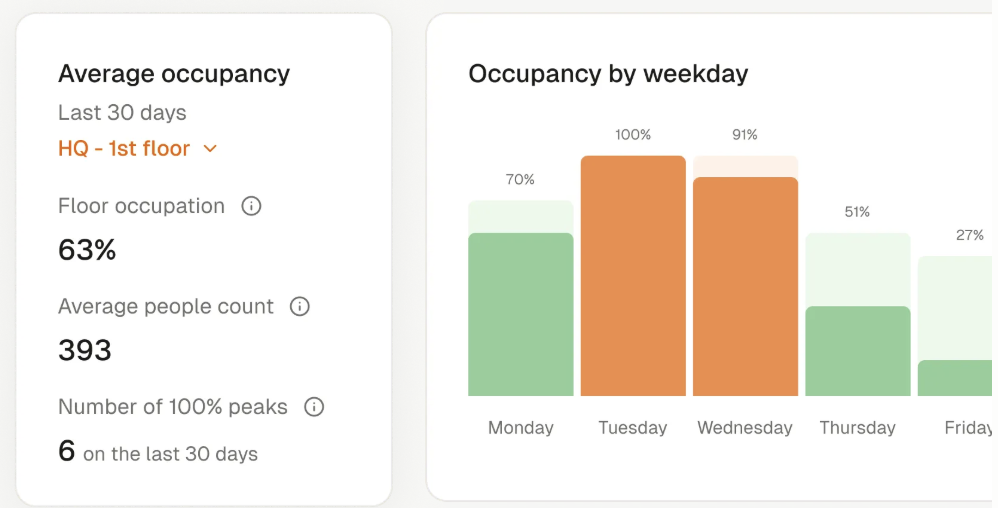Top Robin Alternatives in 2025
If you’re exploring Robin alternatives, this guide will help you find the best option.
Robin is a workplace management platform. It helps companies with desk booking, meeting room scheduling and visitor management. Some companies use Robin to organize office resources and plan their workplace operations. But in 2025, the workplace has changed. Companies now adopt flex office software.
More and more companies now mix remote work with office presence. This makes a tool for team management, workforce management (WFM), and workplace analytics essential. This tool must support collaboration and employee experience, not just logistics.
Robin is powerful, but it often feels too complex. It focuses more on resources than on people. For many companies, this approach no longer fits the way they want to organize hybrid work.
That is why many organizations search for a Robin alternative. The best option today is m-work flex.
Why companies search for Robin alternatives
Robin offers many features ; it was built mainly for facility and space management.
Its strength is in resource booking and office planning. For many years, this made sense. But today, companies need more.
Companies in 2025 want a flex office solution that is easy to use. They need a tool to manage remote work and organize teams clearly. The platform must support HR, managers, and employees every day. Quick adoption is key, without heavy IT setup.
Common challenges with Robin include:
- Complex interface for employees
- High IT involvement for setup and changes
- Limited focus on hybrid work and telework policies
- Pricing that is hard to scale for large teams
These issues make Robin less attractive for companies that want a modern, employee-focused solution. This is why many organizations switch to m-work flex.
What is m-work flex?
M-work flex is a workplace management solution designed for hybrid work. It supports flex office models and makes team presence clear. Instead of focusing on facilities only, it puts people and collaboration at the center.
With m-work flex, employees can:



- Integrate daily tools such as Microsoft Teams ; Outlook HR systems

- Understand the team habits and adjust your organizations accordingly

For managers, m-work flex delivers built-in workplace analytics. They see office occupancy, peaks, and unused areas. They can adjust telework policies and improve workforce management (WFM).
This is a game changer as it helps balance remote work and office presence while using space efficiently.
The software is simple and intuitive, so employees adopt it quickly. It requires no training and no complex setup. It also works as a team management tool that people actually want to use.
Benefits of choosing m-work flex over Robin
Flex office focus
Robin manages many workplace functions, including visitor check-in and space updates.
But m-work flex focuses on flex office software and hybrid work. The design supports hot-desking, team presence, and remote work planning. It makes the office experience easier for both managers and employees.
Easy adoption
Adoption is the main challenge with workplace software.If employees don’t use it, the project fails.
M-work flex is intuitive and easy to use. Employees book a desk / a parking slot or mark remote work in seconds. Adoption is quick and natural ; most teams are on board in just days.
Remote work integration
Hybrid work is not only about desks and rooms. M-work flex helps define remote policies and attendance rules. Managers can easily see who is working remotely and who is at the office.
This creates better visibility and coordination. Employees can plan their weeks with confidence. This level of integration between remote work and workplace management is something Robin does not emphasize.
Team visibility
M-work flex makes team presence transparent. Employees know when their colleagues or project teams will be in the office. This makes collaboration days more productive.
It helps employees come to the office for the right reasons: teamwork, alignment, and important discussions. Flex office becomes a way to build culture, not just a booking system.
Workplace analytics
Managers using m-work flex don’t just track desk usage. They access real insights into attendance and office performance.
They see which days are busiest, which spaces are underused, and how telework rules affect presence. These reports support HR, real estate, and WFM decisions. Data is clear, accurate, and actionable from day one.
Who uses m-work flex?
Already +150 companies trust and use m-work flex everyday; including large organizations like ; JCDecaux, Crédit Agricole, and SNCF. They coordinate thousands of employees across multiple sites and regions.
M-work flex also fits scale-ups and mid-size businesses. It helps retail HQs, call centers, and corporate offices. It balances remote work management with in-office collaboration. It reduces wasted office space and improves team visibility.
This flexibility makes m-work flex useful across industries. Any company moving to a flex office model can use it to improve employee experience and reduce costs.
The bottom line
Robin is a strong workplace platform. But it focuses more on facilities than on people. In 2025, companies need more. They need flex office software that supports remote work, team management, and workplace analytics.
That is why m-work flex is the number one Robin alternative. It combines desk booking, telework rules, presence tracking, and WFM analytics in one platform. It helps organizations reduce wasted space, improve collaboration, and create a better employee experience.
👉 Try m-work flex for free and transform your hybrid workplace management.

.png)

.png)

.png)

